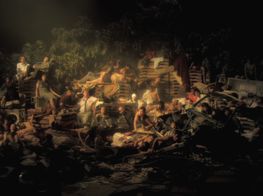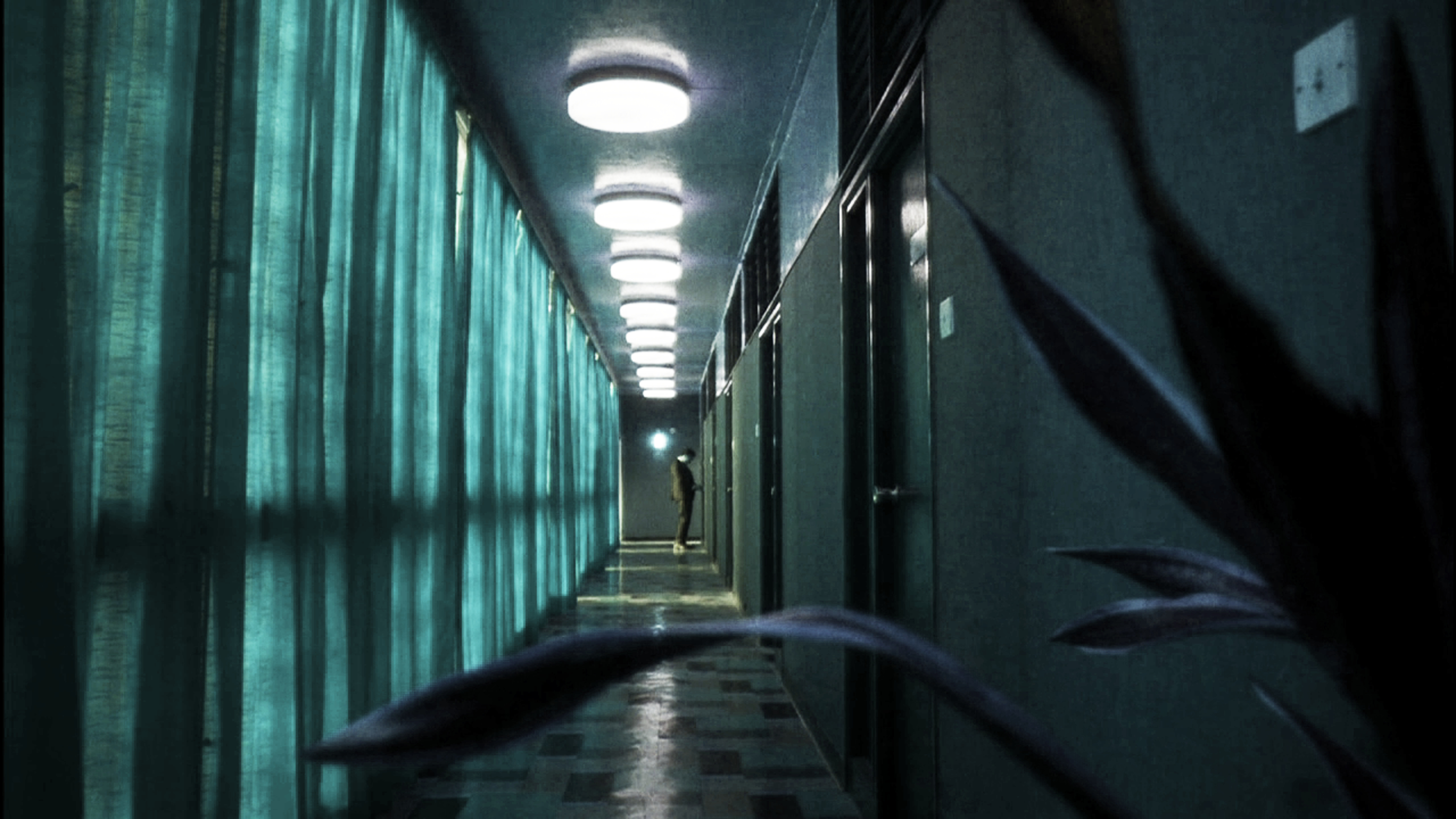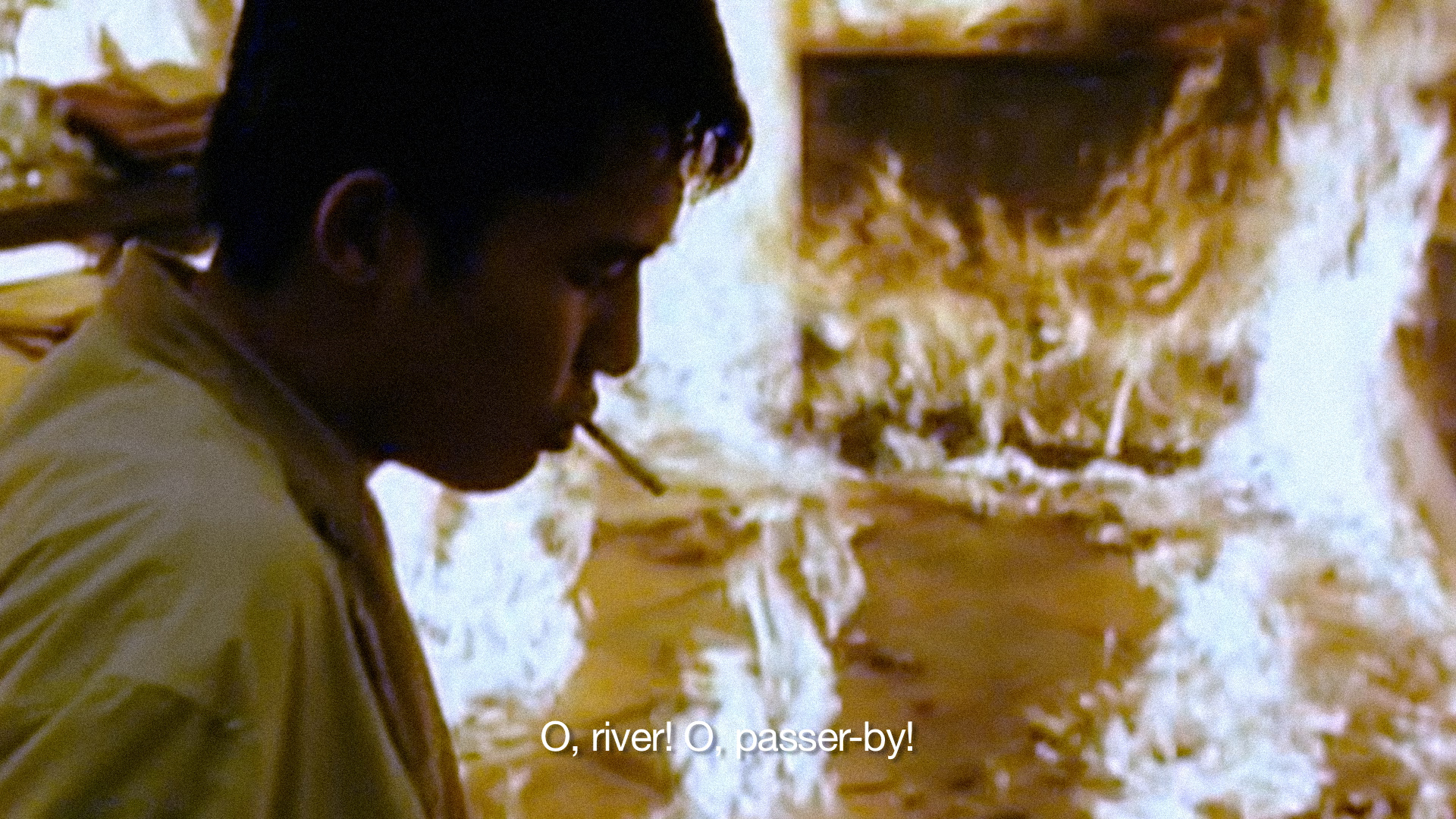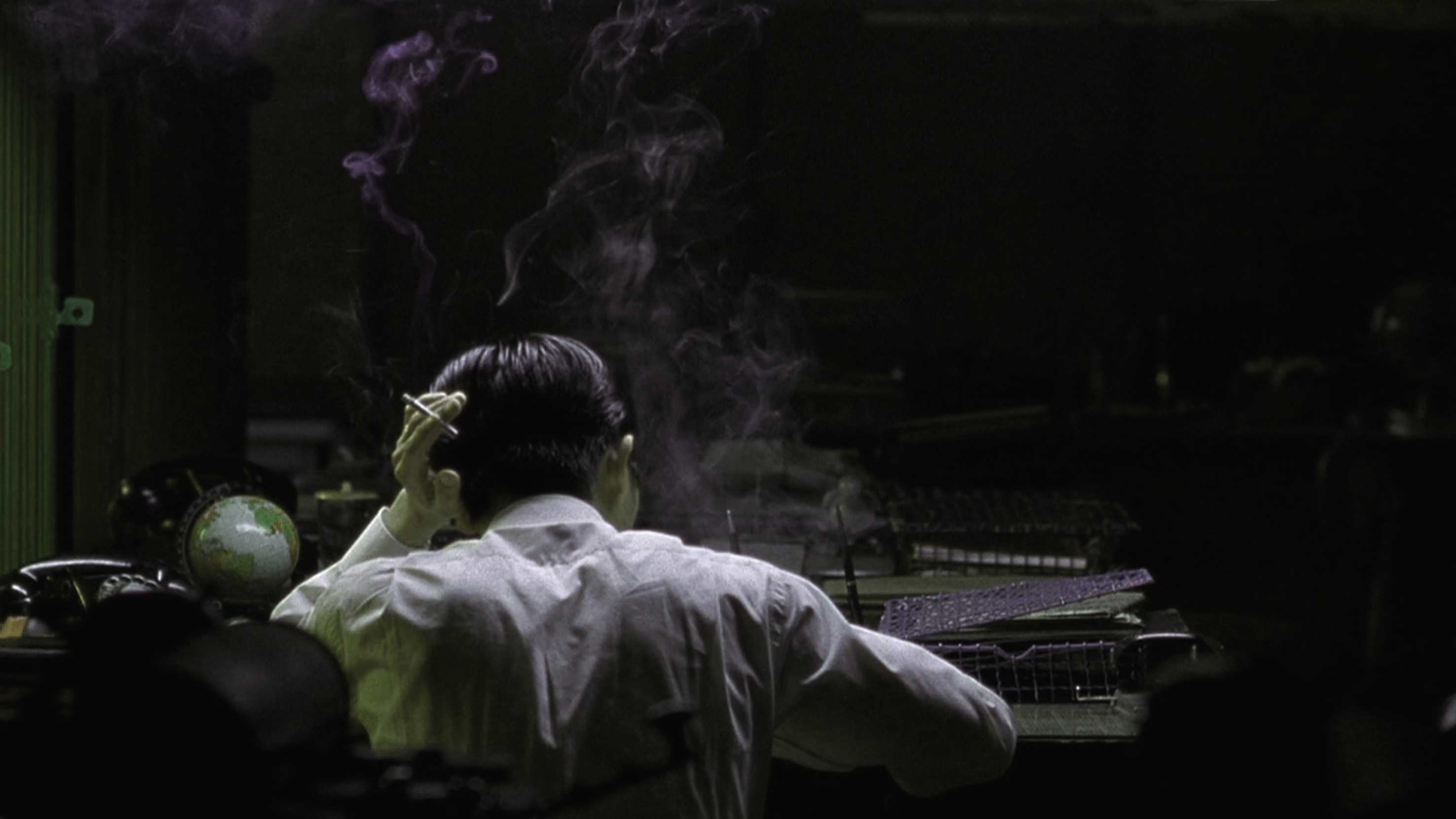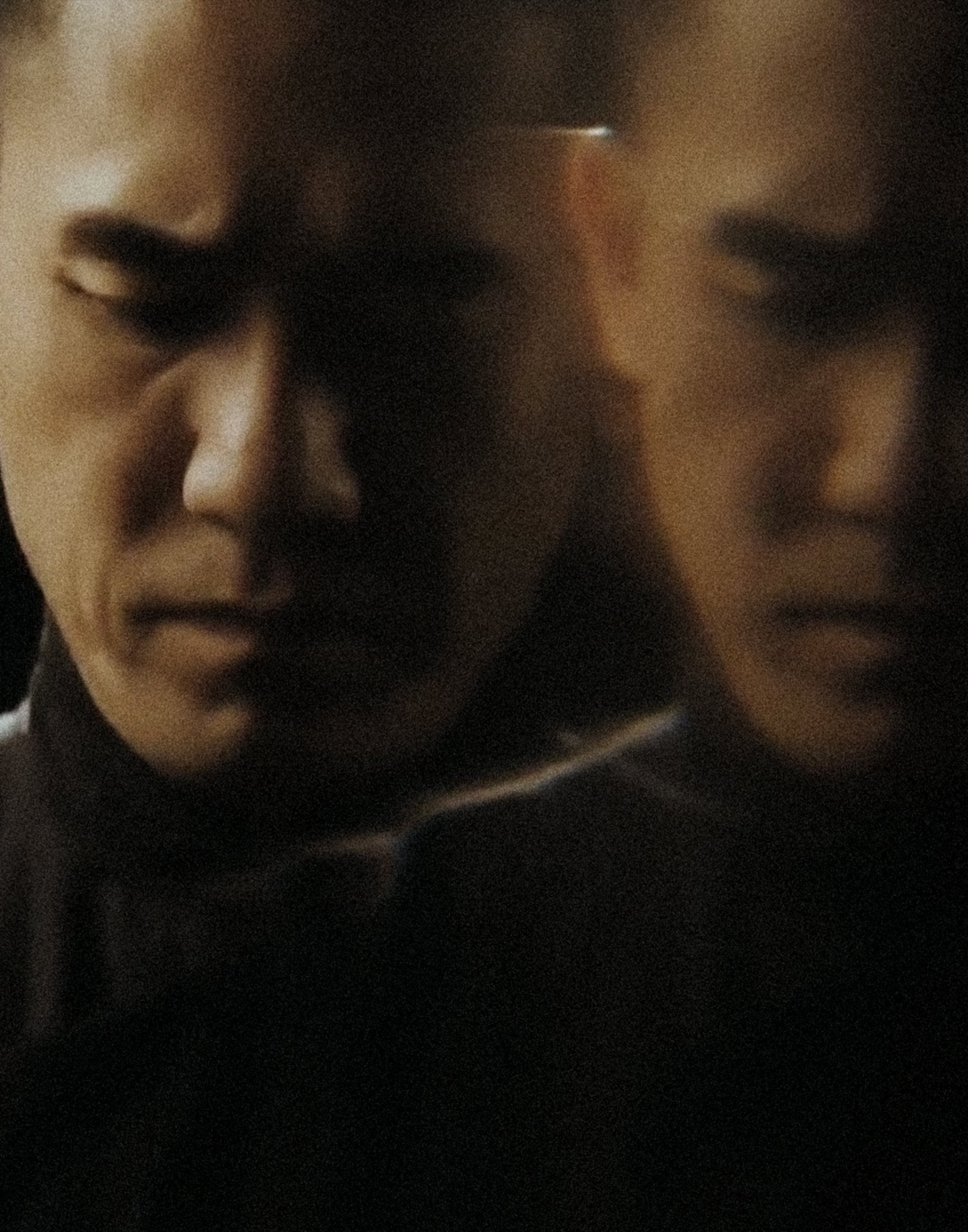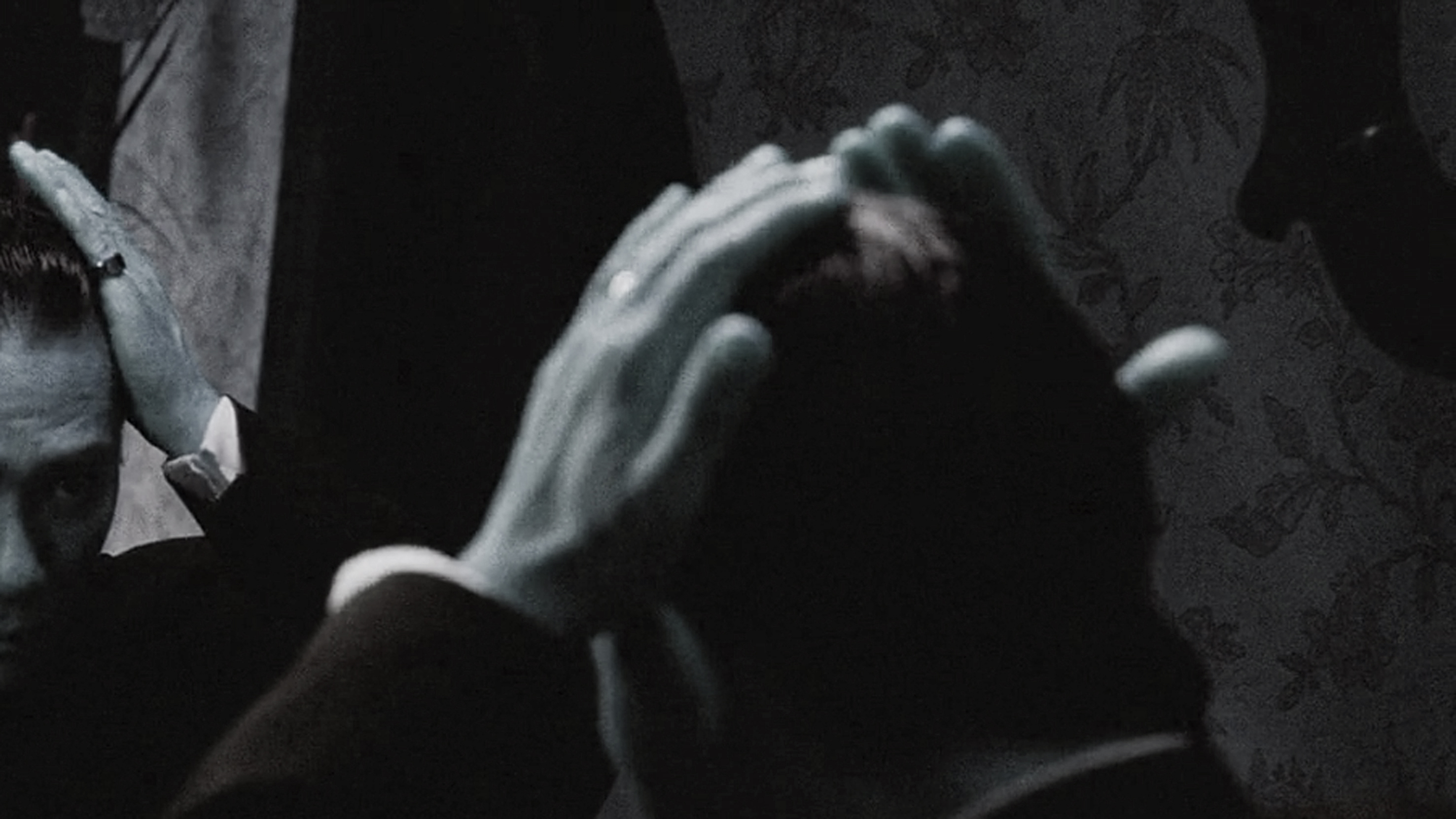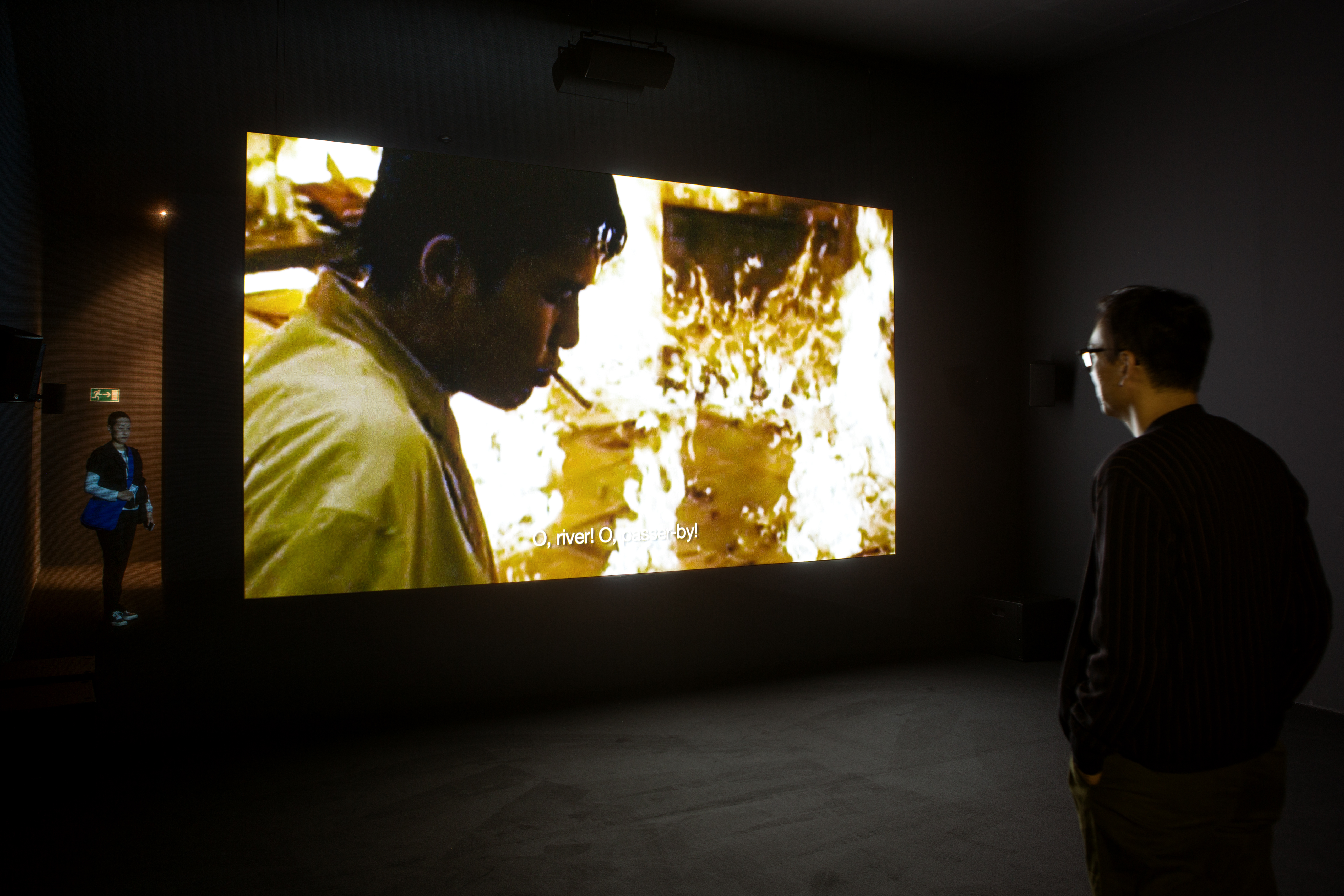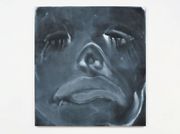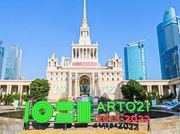Ho Tzu Nyen
Image: Ho Tzu Nyen. Photo: Morita Kenji. Courtesy of Mori Art Museum.
Image: Ho Tzu Nyen. Photo: Morita Kenji. Courtesy of Mori Art Museum.
Singapore artist Ho Tzu Nyen's two-channel video The Nameless (2014) is currently on view at Brisbane's Gallery of Modern Art as part of the exhibition Time of others (a collaboration between Museum of Contemporary Art Tokyo, The National Museum of Art, Osaka, Singapore Art Museum, and Queensland Art Gallery, on until 18 September 2016).
Initially commissioned for the 2014 Shanghai Biennale and delayed due to Chinese censorship, the work was shown earlier this year in the Unlimited sector of Art Basel in Switzerland. Ho was the first Singaporean artist to ever present work in Unlimited, the Basel sector dedicated to artwork which exceeds traditional booth formats.
The Nameless revolves around the story of a man named Lai Teck, one of the 50 known aliases of the Secretary-General of the Malayan Communist party from 1939 to 1949. Lai Teck's real name and background have never been confirmed, but evidence suggests that he was born in Vietnam to a Chinese mother and served as a spy to both the French and British.
Lai climbed the ranks of the Malayan Communist party by acting as an informant to sabotage his adversaries, later escaping execution by the Japanese by pledging allegiance to their intelligence forces. In 1947, Lai was [allegedly] murdered by party Communists in Thailand after the extent of his disloyalty was discovered.
Piecing together found footage from several Hong Kong films starring actor Tony Leung Chiu-wai, The Nameless acts as a fragmentary portrait of Lai Teck, the film star's likeness standing in for the ambiguous political figure. Ominous and shadowy, the film features Leung (as Lai) in times of distress and introspection, interspersed with repeated motifs of smoke, water, torture and death.
A speculative voiceover describes what is known of Lai's mysterious life. To add to the work's ambiguity, the film is presented simultaneously in two separate rooms, one narrated in Vietnamese and the other in Chinese, a nod to Lai's bilingualism and fluid Sino-Vietnamese identity.
Ho Tzu Nyen was born in Singapore in 1976. His focus is the complex colonial narratives of Southeast Asia, and in particular Singapore, which was established as an independent nation only in 1965. He works primarily in film, pulling at the threads of fictionalised myths and political histories in his intellectual and highly aesthetic practice.
Through his work, Ho acts as a critical historian, examining hegemonies to expose their structures and faults. In 2011, he represented Singapore at the Venice Biennale with his film The Cloud of Unknowing (made the same year), which comprised a series of vignettes centred around clouds in Western European paintings by artists such as Caravaggio, Bernini, and Magritte, as well as in the Eastern landscapes of Mi Fu and Wen Zhengming.
In this interview Ho discusses The Nameless, his practice, the complex history of Southeast Asia and our fascination with double agents.
EAAs I'm not familiar with Tony Leung Chiu-wai, before I first watched The Nameless, I thought that you'd had filmed all of the footage yourself. What a shock I was in for when I realised that the entire work is comprised of found footage from mainstream films.
HTNYes, I actually 'stole' all the footage from existing films starring Tony Leung. I took special pains to ensure that it wouldn't feel like that by colouring all of the images to make them consistent. I also added grain throughout the whole film to unify all the clips. So we basically have film footage spanning 20 years with the same actor.
Actually, one of the main reasons I worked this way was because when I moved to Berlin, I was away from my usual team. I always work with the same team of people who shoot my films or install my work. But when I moved to Berlin, I suddenly found myself away from everyone—and it had been a while since I had tried to do something on my own.
EAWhy did you choose Tony Leung to represent Lai?
HTNTony Leung has always been one of my favourite actors. I've been interested in Lai for the last two or three years, but I couldn't figure out how to make a work about him.
I was always thinking about the relationship between Communism and Marxism in relation to indigenous Southeast Asian cultures. I think in Southeast Asia, it very much resonated with a kind of peasant utopianism—this belief in a ground-up equality and fraternity, in a very local way.
EAHow did you first find out about Lai Teck?
HTNI've always been engaged with the histories of the left in Singapore and Malaysia, which is of course very connected. A lot of this history is very much repressed in Singapore. I think now they are starting to open up a little bit, because the left is no longer seen as a real threat, but that is because we have newer threats today. I've been researching that for the last seven or eight years, and I came across this figure. I find him extremely interesting because he's really pivotal to the history of our region.
Essentially, during the Second World War, the only people who were resisting the Japanese were guerrillas who were part of the Malayan Communist Party. The British were actually sending them weapons so that they could form a resistance against the Japanese. In 1945 when the Japanese surrendered, the only organised armed forces in Singapore and Malaysia were the Communists. So in 1945, they planned an armed takeover of the whole region.
They would have succeeded, most probably, because the British were weakened and had not yet returned. But because their leader was a triple agent, he told them that an armed struggle was not the way, and rather to wait for the British to return and to gain power through the electoral process.
That was when the Communists lost the initiative. Two years after the British returned, it was discovered that Lai was a triple agent, so they got rid of him. In 1947, the Malayan Communist Party started an armed resurrection, but by that time they had lost the initiative and it was a lost cause. Things would have turned out very differently if not for him. It's almost like an alternate universe.
EAIs he a well-known figure in Singaporean history?
HTNNo, most people don't really know about him.
EAI noticed that there isn't very much information about him online. Was your research process difficult?
HTNIt was quite difficult, and most of the information exists in very specialised academic texts. You can find a few articles, and you find him being mentioned in other kinds of materials. His successor, Chin Peng, who is far more famous, released a biography which is very widely read. In a way, all the attention went to Ching Peng because he was the man who led the armed struggle, but not many people knew about his shadowy predecessor.
EAWhy do you think that is, if he was such a pivotal figure in history?
HTNI think there are a few factors. One is that up to today, we still know very little about him. We still don't know what his real name is. We don't even know what happened to him. Ching Peng mentioned in his biography that Lai Teck was murdered in 1947 by Communist hitmen, but this is also kind of hearsay. Ching Peng didn't witness it himself; it's all what he heard. There isn't much solid information.
Lai Teck was known by more than 50 different aliases, so nobody knows what his real name was—so that's one factor. Another is just the strong repression of information over the entire period. Most of the information related to that period was kept secret. Only certain scholars had access to this information, and very often they were scholars who had some kind of link to the colonial government or the secret police. So I think all of these reasons came together to ensure that very few people knew about him.
Water, for me was a major metaphor. I think about the mode of being of a man like Lai Teck as something that is really like water, and I always think of Southeast Asia as a kind of empire of water. Of course Singapore is an empire of humidity, which is a kind of water. And also water as a trade, as a circulation of language, bodies and goods.
EAA line in the video mentions the 'holy motors of history'. What does that refer to?
HTNI was always thinking about the relationship between Communism and Marxism in relation to indigenous Southeast Asian cultures. In a way, Communism is an important ideology. But I think in Southeast Asia, it very much resonated with a kind of peasant utopianism—this belief in a ground-up equality and fraternity, in a very local way. In that particular passage, I was trying to take Communism and sort of fold it into a story of local, magical rituals and myths. Which is always something I was interested in. There hasn't been a lot of scholarly work written about that, but it was a kind of connection that I thought was interesting.
EACan you explain the way you divided the video into chapters?
HTNThe chapters are a way of organising the narrative into things that I'm interested in pursuing. For example, the very first chapter is 'Every Name in History is I,' and that was about my interest in naming. In the Western tradition, Adam named the animals, and naming is the first act of possession.
EAWhich is very true in colonial history too.
HTNExactly. With Southeast Asian colonial history, the different ethnicities were broken up by the British. The Malay race was essentially invented by the British. But then we have this figure Lai Teck with over 50 names, and no one knows his real name. So it becomes a way of eluding this notion of naming.
EAI noticed segments, sometimes quite poetic, of different motifs in the video. For example: blood, ink, water (as in tears, bodies of water and rain), cigarettes.
HTNWater, for me was a major metaphor. I think about the mode of being of a man like Lai Teck as something that is really like water, and I always think of Southeast Asia as a kind of empire of water. Of course Singapore is an empire of humidity, which is a kind of water. And also water as a trade, as a circulation of language, bodies and goods. Which is why it was important for me to speak about how Lai Teck was first born in Vietnam, and then how he travelled across Asia to the different port cities as a sailor. It's a kind of an underbelly, this circulation of people only going to ports where you meet working class people. A lot of radical ideas were exchanged in these circles.
This circulation was important for me; I tried to fold all these different notions of water together with the work. The cigarette motif wasn't something I had planned from the beginning but something that came along when I started to classify, when I went through all the films with the same actor. I must have gone through 40 to 50 films. In the end, I probably selected clips from 20. I was looking through all this footage and I repeatedly noticed the cigarette smoking. It became an interesting way to link up the footage. But I guess with the smoking, it also created a certain kind of atmosphere and mood. We associate it with anxiety, waiting or cliché ideas of spies and double agents.
EAThe video does evoke a very strong sense of inner turmoil.
HTNExactly. This is one of the main reasons I chose this actor. He has been repeatedly cast as a traitor or triple agent in a lot of Hong Kong and Chinese-language cinema. The last famous one was probably Lust, Caution. That was by Ang Lee. He acted as a traitor who was working for the Japanese when they occupied China. I think it was made about four or five years ago. Before that, he acted in a trio of Hong Kong movies where he was an informer, like a stool pigeon type of character, which is quite relevant in the Hong Kong film world.
He was just often cast as this suspicious figure and he has a very unique acting style. Usually Hong Kong actors overact, but this particular guy, in most films, is actually very restrained and almost blank. When someone is blank, it's very easy to project your own expectations onto their face. But what is great about him is that there's a kind of inner tension or discomfort in his eyes. I'm a big fan of this and basically selected a lot of clips where I felt such blankness was being evoked. I guess the film, in a way, was a result of my compiling all of these scenes together.
EAI think that feeling of uncertainty is transferred to the viewer through the video's looped cycle and disjunctive narrative. I recently read an interview where you said that you try to produce work for an imaginary spectator who might have no understanding of its references. Do you think that also applies to this film?
HTNI think very much so. I think there are many ways to read the work. For someone who recognises Tony Leung or his films, every clip means at least two things. The first is the narrative I've constructed, but the second is the original context of these films and where they come from. I tried to intensify this with the installation, which is why I divided it and projected it in two rooms. So on one side we have a voiceover which is in Mandarin, and on the other the voiceover is in Vietnamese. I chose those two languages because one of the few things we know about Lai Teck is that he was supposed to be a Sino-Vietnamese. If you don't understand both Vietnamese and Chinese, which not many people do, you will never be able to check if the same story is being told on both sides of the installation. So you will always suspect that there is something else left out, which you can't access. There is an excess of context that you can never fully exhaust, which is how I think about the story of Lai Teck.
EAI suppose because there are so many unknowns in his story, the audience projects their own ideas to fill in the gaps.
HTNThere is perhaps a certain strangeness in the film that comes from the fact that it's combining elements from all these disparate sources from over 24 years. So there's always a certain kind of instability within the image already. Of course, when I write the script, that intensifies this, as does the installation.
EADid you write the score as well?
HTNYes, kind of. I didn't add any new songs. I simply used the songs from all these films and I remixed them. That was one parameter I set for myself, which was not to add anything to the film except the two voices in Vietnamese and Chinese.
EAThere is a parallel with your 2011 work, The Cloud of Unknowing, of sampling material from familiar sources together to make something new.
HTNIt's pretty much my mode of operation. Sometimes I think of myself as just a re-arranger. I just rearrange things in different configurations. The mode of collaging is my natural mode, it's how I think. Another work, Pythagorus (2013), was made when I started working with found footage, which is a nice way of saying 'stolen footage.' In the experimental film circles which I sometimes fall into, this is a way of looking that is quite old. A really good example of this method would be Christian Marclay's The Clock (2010). What surprises me is that we don't see a lot of this in Asian work. I've never seen an Asian found footage film. I wonder why that it is so, because piracy is a big part of everyday life.
EAThere are indeed a lot of mysterious DVD shops. Do you notice sampling in Asian music culture?
HTNNo. But of course in the west, piracy is not part of everyday life because copyright laws are much stricter. But you see a lot of sampling in art and music, but not in Asia.
EADo you think that will change?
HTNI think sooner or later. All this access to information and images that already exist, floating around in the internet: these are all just materials that are waiting to be reused. Sometimes I think it's a very ecological way of working. When you shoot a film or you make a new film, it's a very destructive activity.
EAWhat is your process like?
HTNI mostly work with a team. I work mostly as a visual artist, but when I shoot my videos, I work like a filmmaker. For this particular work, because I had just moved to Berlin I could edit on my own—but then again, I have to work with other people in later stages. For example, I worked with a really great colourist who blended all the images together.
A few people have told me that they have never seen a found footage film done this way before. Most of the time, like with Christian Marclay's The Clock, you see the different sources very clearly. But that was what I tried to go against by blending everything. I also worked with two voice actors to do the voiceovers and a sound person. For me, this was a very reduced team, which I was happy about. The previous few projects I was working on grew a little too big and sometimes that gets a bit stressful.
EAHad you watched all of Tony Leung's films before you began the project?
HTNMost of them I had seen before because I'm a bit of a cinephile. Actually, when I began, there were even specific scenes from films I'd seen 10 years ago that I could remember. One of the reasons I selected this actor was because I remembered that he acted in Vietnamese films.
For someone who recognises Tony Leung or his films, every clip means at least two things. The first is the narrative I've constructed, but the second is the original context of these films and where they come from.
EASo he must also speak Vietnamese and Chinese?
HTNNo, he doesn't. When he acted in the Vietnamese film, he always acted as this silent, solitary man of few words. So he was always just walking around and smoking. When he finally had to speak, it was a voiceover and he was a poetic gangster.
EAThat reminds me of Tom Cruise speaking with an American accent when acting as a German colonel in World War II movies.
HTNYes, they don't even try. With Hollywood, there is always a special kind of privilege that they have, distorting other people's languages and accents. But I remembered that Leung had acted in these Vietnamese films, so it fitted the story perfectly because like I said, Lai Teck is Sino-Vietnamese. I also started thinking that there is also something very special about Hong Kong cinema. There are a lot of films in Hong Kong cinema that deal with traitors, informers and double agents.
EAWhy do you think that is?
HTNI think it's an expression of Hong Kong's political and historical destiny. They were British, and now Chinese, but they are Hong Kongers first and foremost. And they're always playing one side against the other. When they work with the British; all they want is to survive and prosper. And they are now working with the Chinese in the same way. Hong Kong is the great triple agent in a way, which is why they have a lot of films to do with triads and the mafia. The lead character is always an informer or traitor. It's a whole genre special to Hong Kong. So in a way I think that this film, although it's about Southeast Asia and this historic character, is also really about Hong Kong cinema and its fascination with shifting identities. —[O]

